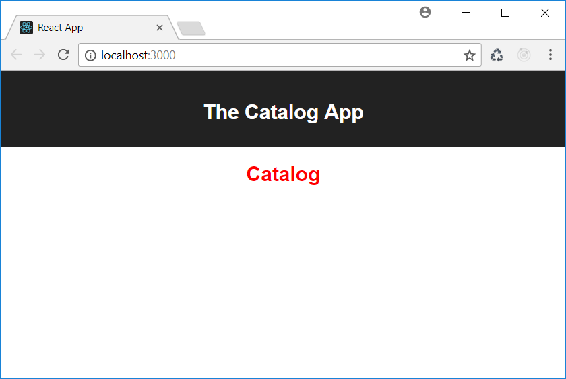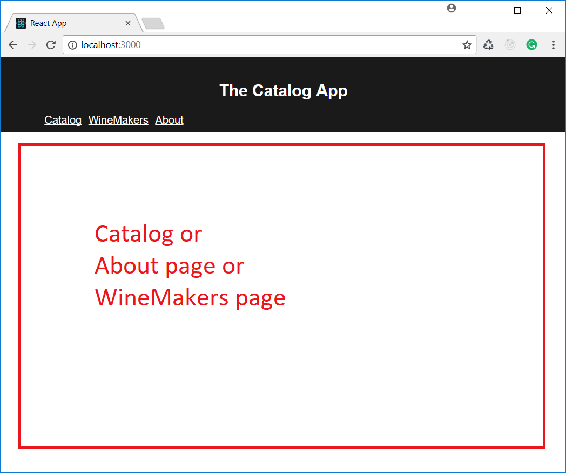Andrea Chiarelli [Andrea Chiarelli] - Beginning React: Simplify Your Frontend Development Workflow and Enhance the User Experience of Your Applications With React
Here you can read online Andrea Chiarelli [Andrea Chiarelli] - Beginning React: Simplify Your Frontend Development Workflow and Enhance the User Experience of Your Applications With React full text of the book (entire story) in english for free. Download pdf and epub, get meaning, cover and reviews about this ebook. year: 2018, publisher: Packt Publishing, genre: Computer. Description of the work, (preface) as well as reviews are available. Best literature library LitArk.com created for fans of good reading and offers a wide selection of genres:
Romance novel
Science fiction
Adventure
Detective
Science
History
Home and family
Prose
Art
Politics
Computer
Non-fiction
Religion
Business
Children
Humor
Choose a favorite category and find really read worthwhile books. Enjoy immersion in the world of imagination, feel the emotions of the characters or learn something new for yourself, make an fascinating discovery.
- Book:Beginning React: Simplify Your Frontend Development Workflow and Enhance the User Experience of Your Applications With React
- Author:
- Publisher:Packt Publishing
- Genre:
- Year:2018
- Rating:3 / 5
- Favourites:Add to favourites
- Your mark:
Beginning React: Simplify Your Frontend Development Workflow and Enhance the User Experience of Your Applications With React: summary, description and annotation
We offer to read an annotation, description, summary or preface (depends on what the author of the book "Beginning React: Simplify Your Frontend Development Workflow and Enhance the User Experience of Your Applications With React" wrote himself). If you haven't found the necessary information about the book — write in the comments, we will try to find it.
Take your web applications to a whole new level with efficient, component-based UIs that deliver cutting-edge interactivity and performance.
Key Features- Elaborately explains basics before introducing advanced topics
- Explains creating and managing the state of components across applications
- Implement over 15 practical activities and exercises across 11 topics to reinforce your learning
Projects like Angular and React are rapidly changing how development teams build and deploy web applications to production. In this book, youll learn the basics you need to get up and running with React and tackle real-world projects and challenges. It includes helpful guidance on how to consider key user requirements within the development process, and also shows you how to work with advanced concepts such as state management, data-binding, routing, and the popular component markup that is JSX. As you complete the included examples, youll find yourself well-equipped to move onto a real-world personal or professional frontend project.
What you will learn- Understand how React works within a wider application stack
- Analyze how you can break down a standard interface into specific components
- Successfully create your own increasingly complex React components with HTML or JSX
- Correctly handle multiple user events and their impact on overall application state
- Understand the component lifecycle to optimize the UX of your application
- Configure routing to allow effortless, intuitive navigation through your components
If you are a frontend developer who wants to create truly reactive user interfaces in JavaScript, then this is the book for you. For React, youll need a solid foundation in the essentials of the JavaScript language, including new OOP features that were introduced in ES2015. An understanding of HTML and CSS is assumed, and a basic knowledge of Node.js will be useful in the context of managing a development workflow, but is not essential.
Table of Contents- Introducing React and UI Design
- Creating Components
- Managing User Interactivity
**
About the AuthorAndrea Chiarelli has over 20 years of experience as a software engineer and technical writer. In his professional career, he has used various technologies for his projects: from C# to JavaScript, from Angular to React, and ASP.NET to PhoneGap/Cordova. He has contributed to many online and offline magazines and is the author of several books published by Wrox Press and Packt. Currently, he is a software architect at the Italian office of Apparound, Inc. and a regular contributor to HTML.it, an Italian online magazine focused on web technologies.
Andrea Chiarelli [Andrea Chiarelli]: author's other books
Who wrote Beginning React: Simplify Your Frontend Development Workflow and Enhance the User Experience of Your Applications With React? Find out the surname, the name of the author of the book and a list of all author's works by series.

![Andrea Chiarelli [Andrea Chiarelli] Beginning React: Simplify Your Frontend Development Workflow and Enhance the User Experience of Your Applications With React](/uploads/posts/book/119447/thumbs/andrea-chiarelli-andrea-chiarelli-beginning.jpg)









